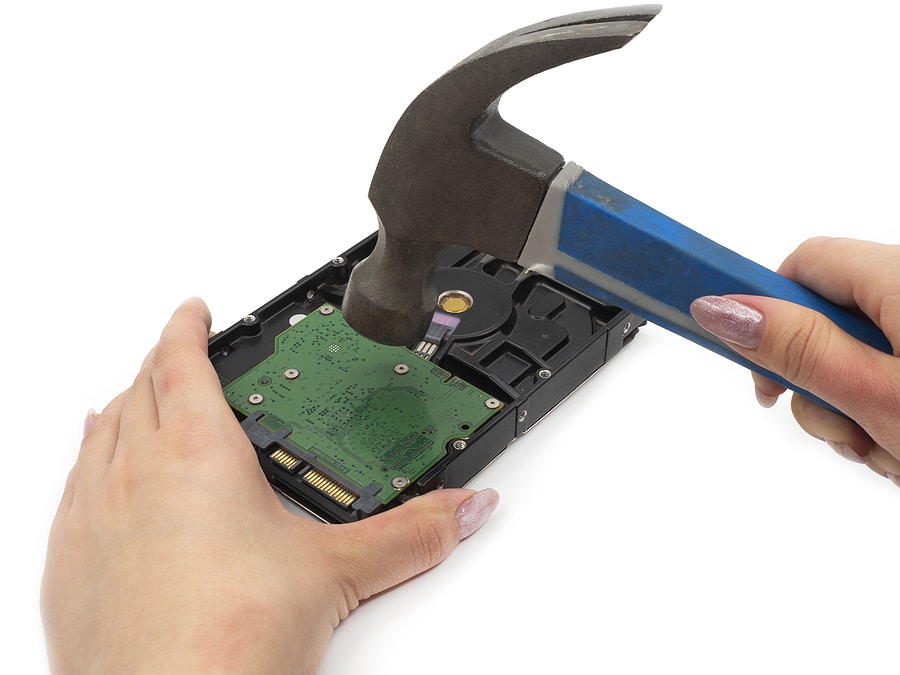End-of-Life Data Destruction: What Is It and Who’s Responsible?

Digital information offers many benefits to today’s businesses. It gives leaders the knowledge they need to make informed decisions while also making it easier for teams to improve the performance of their ongoing projects.
When data is no longer needed, though, it becomes a liability to your company, so it’s important to have a strong grasp of proper data destruction techniques and how to handle data properly when it’s ready for disposal.
With that being said, despite its ubiquity in today’s market, many companies aren’t well-versed in proper end-of-life data destruction practices.
What Is End-of-Life Data Destruction?
There are many ways to get rid of end-of-life (EOL) devices when they’re no longer wanted or needed, but it’s important to make use of a method that ensures any data that was previously stored on the device is gone for good.
EOL data destruction refers to techniques designed to destroy or delete digital information, such as:
- Wiping (use verifiable, certified wiping)
- Drilling and crushing (dangerous & not guaranteed)
- Shredding (use certified shredding)
With this in mind, simply deleting your data isn’t enough. HDDs, SSDs, flash drives, and any other storage devices that have held important data should be considered high-risk when it’s time to discard them.
Who’s Responsible for Destroying Old Devices?
While managing data destruction is often a process associated with IT team members, it is fundamentally the responsibility of employers. They need to be exceedingly careful in how they handle any type of information, especially user data.
There are important legal and ethical regulations associated with data management, and maintaining compliance is essential for continuous operations. Employers should consult with a team of security experts to ensure all of their data is properly handled when the devices used to store that data are no longer needed.
Businesses can hire a Chief Information Security Office (CISO) capable of overseeing the execution of IT security, but this can get expensive. Rather than unloading EOL devices onto your IT team, consider hiring a third-party service capable of proper data disposal practices.
SEAM Knows How to Deal with EOL Devices
If you’re looking for trained professionals capable of handling your secure data destruction needs, there are many options available to you, but with Secure Enterprise Asset Management (SEAM), you’ll have access to secure computer and hard drive recycling, data destruction, and mobile document shredding services designed to keep you compliant.
Whether you’re discarding old broken equipment or simply ready to upgrade to something new, we’ll make sure you get maximum ROI for your electronic devices.
SEAM’s NAID AAA-certified services give you the best onsite hard drive and solid-state shredding, in-plant hard drive, solid-state shredding, and in-plant hard drive and solid-state sanitization. We also perform data center decommissioning, battery recycling, and IT asset disposition to proactively identify risks and improve performance.
If you’re a business in Sioux Falls, SEAM is solely focused on business accounts in your area. We offer secure data destruction to businesses throughout South Dakota and North Dakota.
If you’re not sure where to begin, our consultants are standing by to answer any questions you might have, so call now to find out how we can improve your IT asset life cycle!
SEAM provides IT recycling and data destruction services including onsite shredding and hard drive wiping to South Dakota, North Dakota, Minnesota, Iowa, and Nebraska.
Schedule a pickup or contact us for more information.





